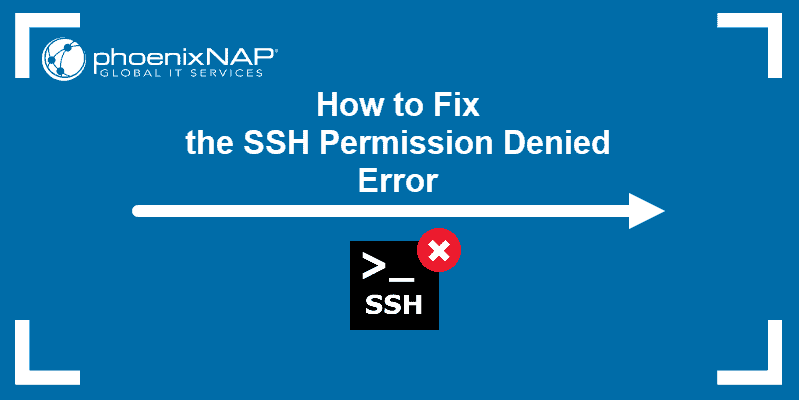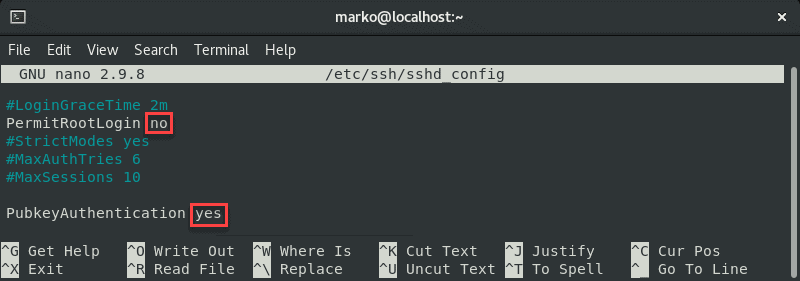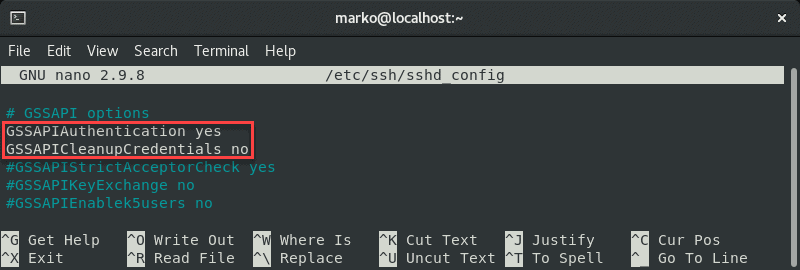Ssh Permission Denied Red Hat Directory Server Ssh Permission Denied Please Try Again Redhat
Introduction
The SSH Permission denied error appears later permission-related settings are modified on the SSH server. Usual scenarios include a new bundle installation or the cosmos of new users.
In this tutorial, y'all will learn how to troubleshoot the SSH Permission denied error and reconnect to your SSH server.

Prerequisites
- SSH client on the local machine and SSH server on the remote system
- A user account to access the remote server (for password-based login)
- A user account withsudo orrootprivileges
What is Causing SSH Permission Denied (publickey,gssapi-keyex,gssapi-with-mic)?
The SSH Permission denied fault appears when trying to SSH into a server:
Permission denied (publickey,gssapi-keyex,gssapi-with-mic) 
Post-obit the Permission denied argument, the subclass contains the attempted authentication methods that failed at the initiation of the connectedness. The error suggests that the public key is the event, which is misleading.
One reason for the error may exist sshd_config , the file that contains SSH server configuration. The other possibility is that the authorized_keys file has insufficient permissions. This file contains the list of public keys for the clients allowed to SSH into the server. Consequently, the system's inability to read from the file results in the Permission denied error.
How to ready SSH Permission denied
Both solutions comprise steps you demand to perform on the server-side. Start by opening the terminal on your server and keep with one of the solutions beneath.
Solution ane: Enable Password Authentication
If you want to use a password to access the SSH server, a solution for fixing the Permission denied mistake is to enable password login in the sshd_config file.
To do this, open the file in a text editor. This instance uses the nano editor:
sudo nano /etc/ssh/sshd_config In the file, notice the PasswordAuthentication line and make sure it ends with yeah .
Detect the ChallengeResponseAuthentication selection and disable information technology by adding no .
If lines are commented out, remove the hash sign # to uncomment them.

Save the file and get out.
Restart the SSH service past typing the post-obit control:
sudo systemctl restart sshd Solution two: Modify File System Permissions
Using the password-based login every bit the SSH authentication method is not recommended due to security concerns. Therefore, the following solution may be preferable since it troubleshoots the public primal hallmark method.
Kickoff, open the sshd_config file using a text editor:
sudo nano /etc/ssh/sshd_config In the file, make sure the following options are set as follows:
PermitRootLogin no PubkeyAuthentication yes 
Note: The steps in a higher place are considered best security practices. If you need to utilize root login, fix the relevant line to aye .
Comment out the GSSAPI-related options by adding the hash sign at the first of the line:
#GSSAPIAuthentication yes #GSSAPICleanupCredentials no 
Too, make sure the UsePAM line is fix to yes :
UsePAM aye 
Salve the file and restart the sshd service:
systemctl restart sshd At present navigate to your domicile folder and check the permissions:
ls -ld 
If your owner permissions are not set to read, write, and execute ( drwx------ ), use the chmod command to modify them:
chmod 0700 /dwelling house/[your-username] Now go to the .ssh folder and recheck the permissions:
ls -ld 
This directory should besides take read, write, and execute permissions for the file owner. To enforce them, utilize chmod once more:
chmod 0700 /dwelling house/your_home/.ssh The .ssh folder contains the authorized_keys file. Check its permissions with:
ls -ld authorized_keys 
The file possessor should take read and write permissions. To set up them, use:
chmod 0600 /dwelling house/[username]/.ssh/authorized_keys Now try logging in with the key pair over again. The output below shows a successful login attempt.

Decision
This tutorial covered the steps necessary to troubleshoot the SSH Permission denied (publickey,gssapi-keyex,gssapi-with-mic) error. By completing the steps in the guide, yous should fix the error and successfully SSH into your server.
Was this commodity helpful?
Yep No
Source: https://phoenixnap.com/kb/ssh-permission-denied-publickey
0 Response to "Ssh Permission Denied Red Hat Directory Server Ssh Permission Denied Please Try Again Redhat"
Post a Comment